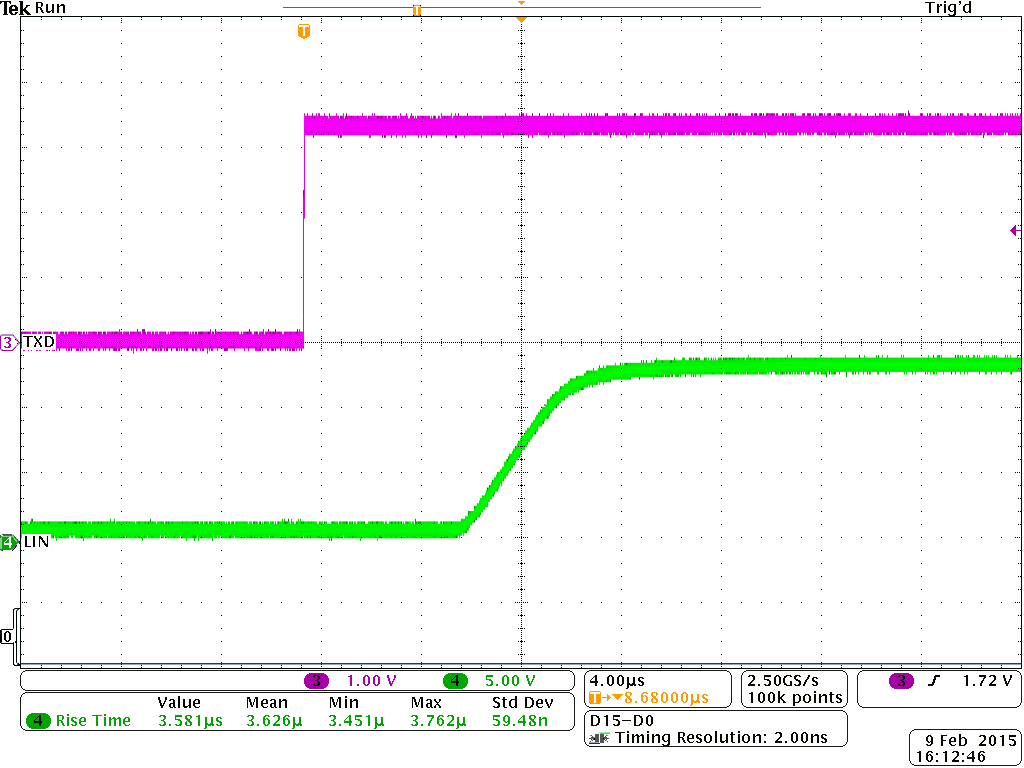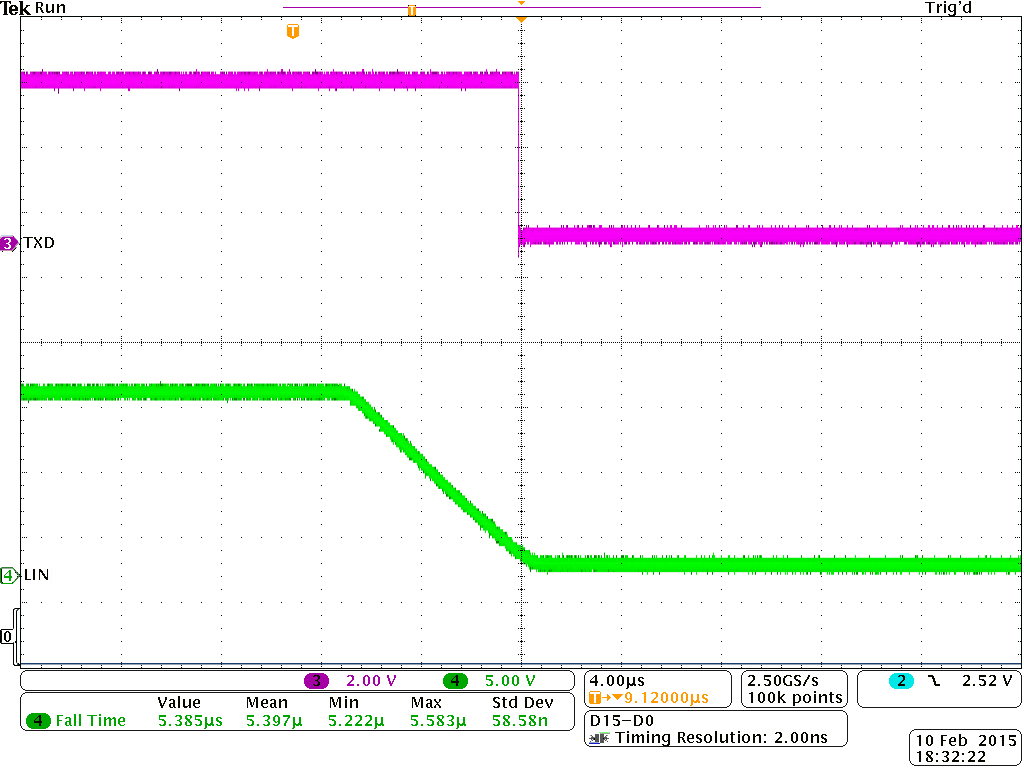ZHCSQ23E October 2004 – May 2022 TPIC1021
PRODUCTION DATA
- 1 特性
- 2 应用
- 3 说明
- 4 Revision History
- 5 说明(续)
- 6 Pin Configuration and Functions
- 7 Specifications
- 8 Detailed Description
- 9 Application and Implementation
- 10Device and Documentation Support
- 11Mechanical, Packaging, and Orderable Information
9.2.3 Application Curves
Figure 9-2 and Figure 9-3 show the propagation delay from the TXD pin to the LIN pin for both the recessive to dominant and dominant to recessive states under lightly loaded conditions.
 Figure 9-2 Dominant to Recessive Propagation Delay
Figure 9-2 Dominant to Recessive Propagation Delay Figure 9-3 Recessive to Dominant Propagation Delay
Figure 9-3 Recessive to Dominant Propagation Delay